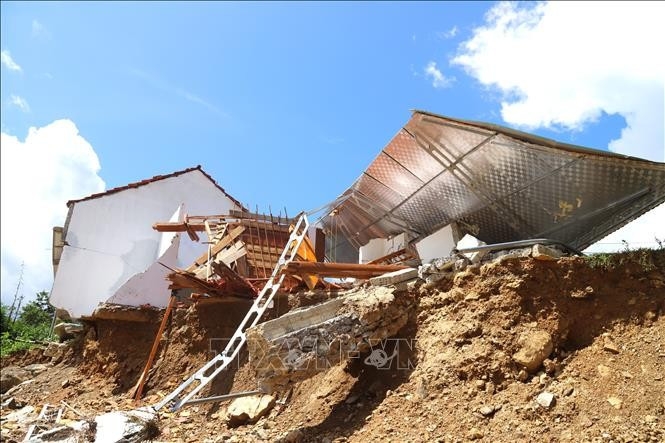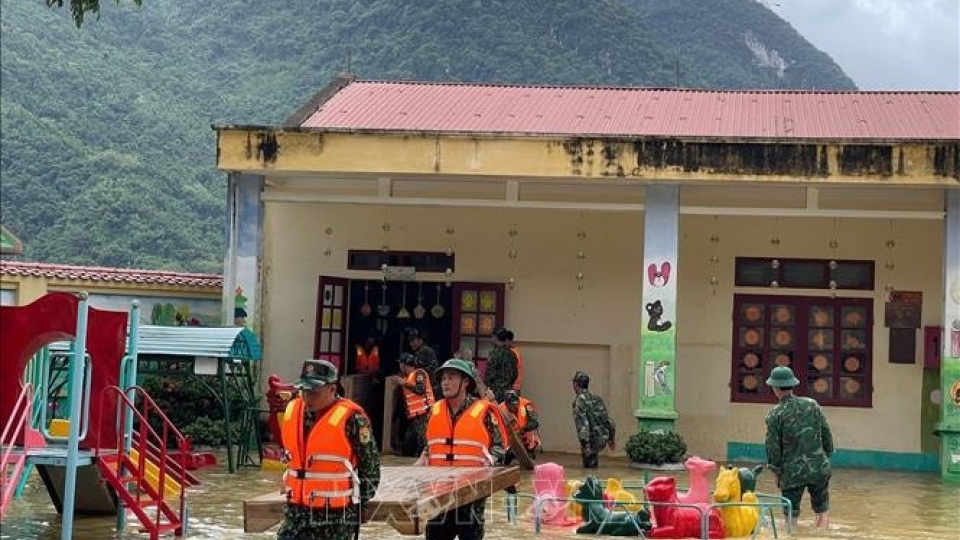Compound disasters highlight need for long-term resilience strategies
A rapid succession of powerful storms, torrential rains, and flash floods has created what Vietnamese officials are calling a “compound disaster,” causing widespread devastation and underscoring the urgent need for long-term climate resilience strategies.

Typhoons Ragasa through Matmo have pummeled Vietnam since late September. Then Typhoon Bualoi, with winds of up to 40km per hour over the East Sea, unleashed record rainfall and destructive gusts across central and northern provinces, compounding damage from earlier systems. In areas still recovering from typhoons Wipha and Kajiki, back-to-back tempests dumped as much as 600mm of rain, inundating regions from Thanh Hoa to Hue city.
Mai Van Khiem, Director of the National Centre for Hydro-Meteorological Forecasting, said this year’s storm season has been highly unusual, marked by overlapping “multi-hazard” events — “storm-on-storm”, “flood-on-flood.” He noted that while Super Typhoon Ragasa weakened after veering toward China, Typhoon Bualoi moved unusually fast before stalling over land for more than 12 hours, battering provinces from Nghe An to Quang Tri.
Preliminary data from the Department of Dyke Management and Natural Disaster Prevention showed that as of October 5, Typhoon Bualoi and its remnants caused an estimated VND18.8 trillion (US$713.3 million) in economic losses. The hardest-hit provinces — Ninh Binh, Ha Tinh, Nghe An, and Thanh Hoa — suffered extensive damage to homes, power grids, and transport networks.
In Hanoi, the storm’s circulation triggered heavy rain and thunderstorms, flooding major streets and disrupting traffic for hours.
By October 7, the impact of Typhoon Matmo and ensuing floods had damaged nearly 9,500 hectares of crops, isolated 1,600 homes, and inundated almost 4,900 others. Landslides and floods were reported at almost 500 sites across Lang Son, Cao Bang, Thai Nguyen, Bac Ninh, and Thanh Hoa. The Bac Khe 1 hydropower dam in Lang Son province partially collapsed, while floods killed three people, left four missing, and injured two others.
Authorities stated that early and coordinated action by the Party Central Committee's Secretariat, the Government, and the political system helped contain losses, but recovery remains a major challenge.
Building resilience for sustainable growth
Experts emphasised that while natural disasters cannot be avoided, effective mitigation and adaptation are vital to safeguard lives, property, and economic activities. Public awareness and preparedness, they said, are key to reducing vulnerability.
Deputy Prime Minister Tran Hong Ha called for integrating disaster prevention and climate resilience into socio-economic planning. He highlighted the importance of the “four-on-the-spot” approach — on-the-spot command, manpower, resources, and logistics — and of holding local leaders accountable for readiness and response.
Deputy Minister of Agriculture and Environment Nguyen Hoang Hiep urged greater investment in multi-purpose infrastructure that supports both flood control and water supply, including strengthened dikes, irrigation systems, and flood diversion structures, alongside forest protection and restoration. He also stressed the need for coordinated rescue operations, accurate post-disaster assessments, and transparent aid distribution.
The official further called for enhanced support to vulnerable localities through improved rescue equipment, emergency stockpiles, and resilient infrastructure such as flood-resistant reservoirs, levees, and coastal barriers.
He noted that sustainable disaster prevention must align with economic transformation — shifting from agriculture-based growth toward diversified industries and services, promoting green growth, circular economy models, renewable energy, and the protection of water and land resources.
In addition, climate adaptation must be integrated into national development strategies, he stated, adding that green growth, a circular economy, renewable energy, and the protection of water and land resources are among the most important factors for disaster prevention, mitigation, and socio-economic development.



